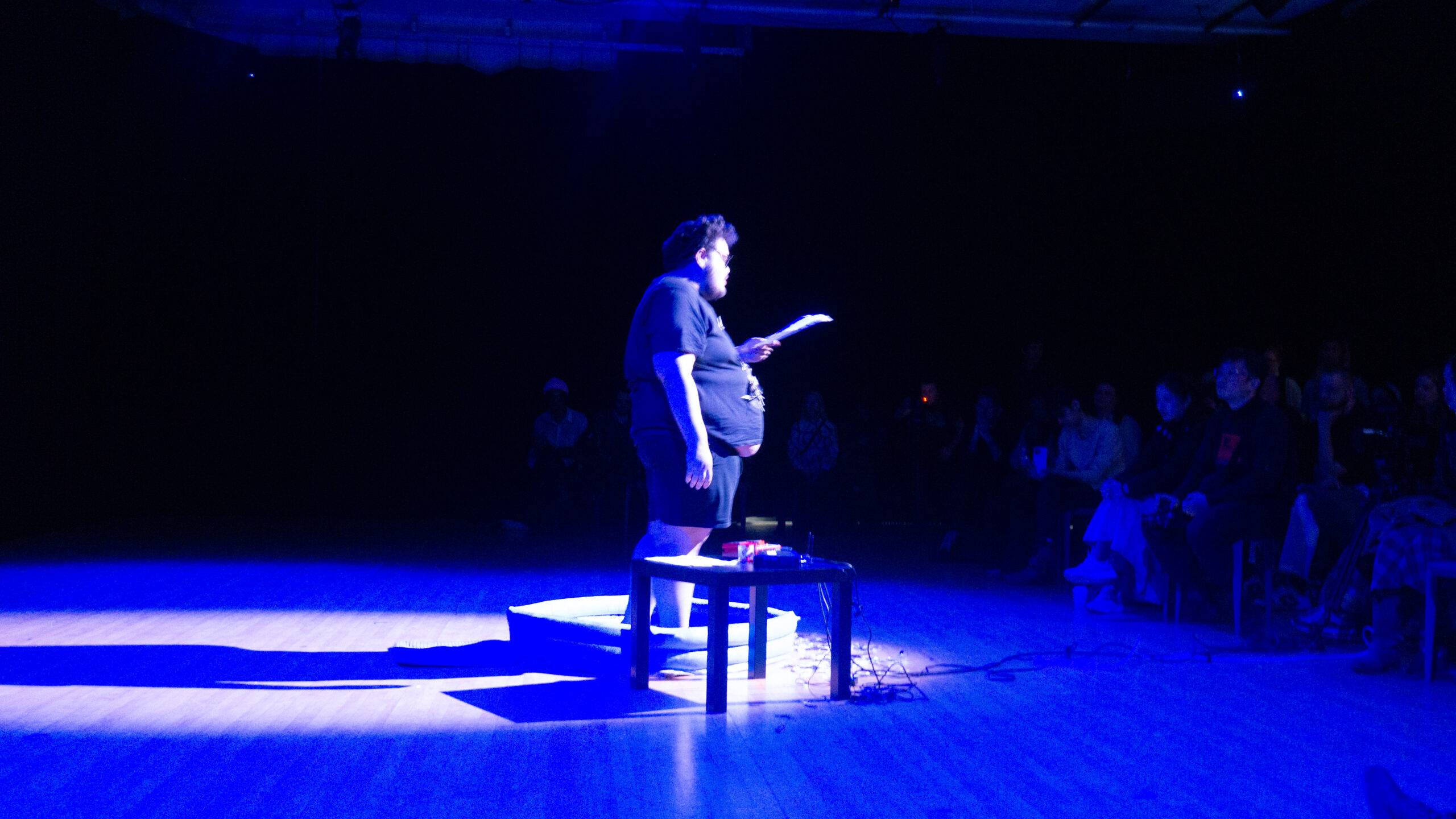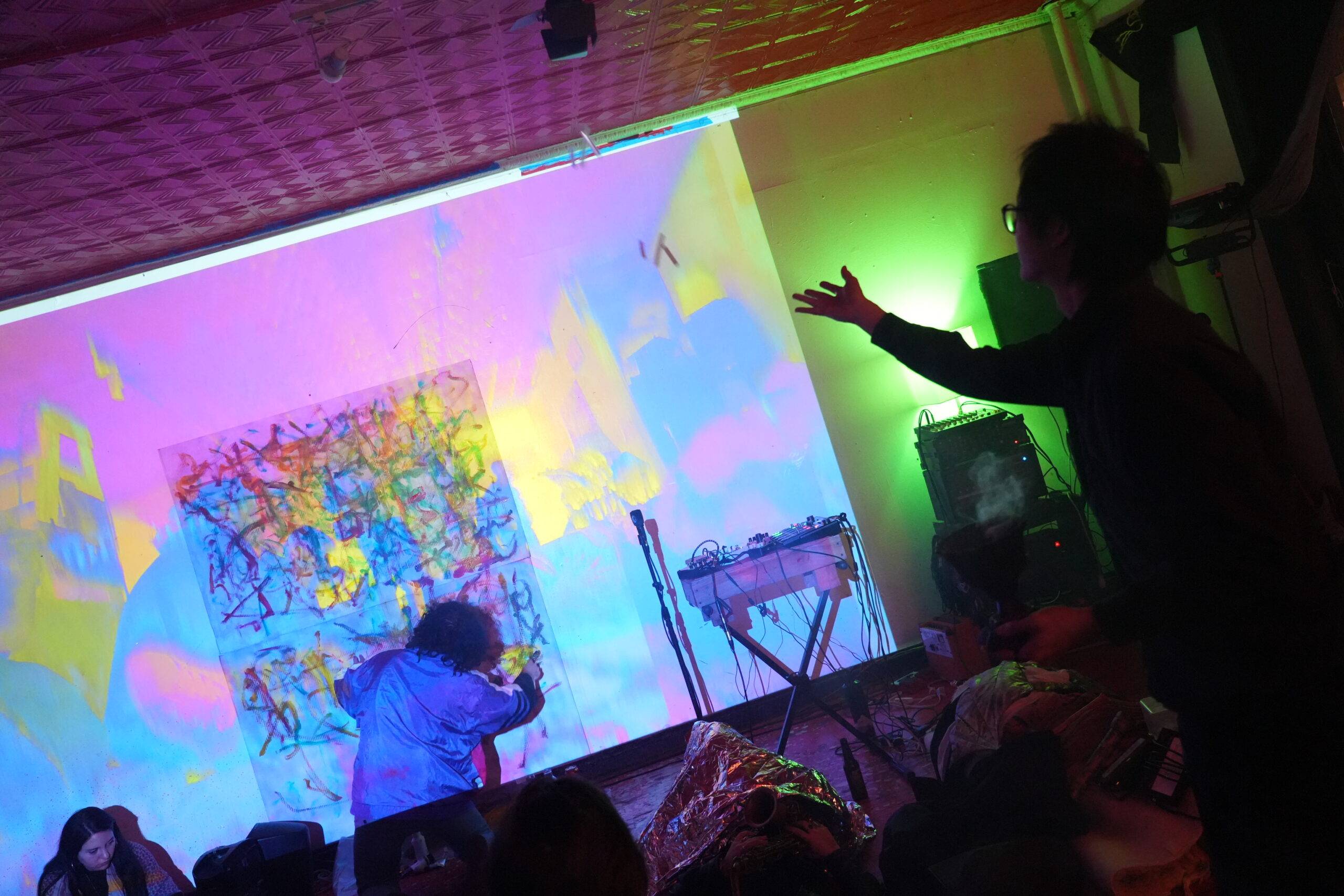Six months ago, I packed my suitcase and left everything else to start my new academic journey at the School of the Art Institute of Chicago (SAIC). As a Nepali person, I was excited about this adventure. Never have I lived outside my country for more than a month. Nor have I ever studied at an American institution, which most Nepali people can’t afford to do. So even if leaving my home and my people was making me uncomfortable, I was excited to start my new journey. I have always craved a space where my intellectual curiosity and creativity would be welcomed. And I thought SAIC would be that place, and it has to some extent.
In comparison to other schools I have studied in, SAIC definitely has more exciting programs and courses. I love the fact that here at our school, we don’t have to treat our teachers and instructors as divine beings. In the land, where I come from, our teachers become our “gurus.” There’s a hierarchical difference between them and us — we have to always follow their orders. In most academic spaces in Nepal, it is frowned upon to question our teachers and their methods. We are expected to believe whatever they teach as the ultimate truth.
However, SAIC functions slightly differently. In my six-month-long academic journey, I have encountered some professors and instructors who value constructive criticism of their own teaching. Similarly, in classrooms, because of diversity among students, there’s also a regular exchange of new ideas and concepts.
Nonetheless, SAIC has a big problem that it has failed to acknowledge — the lack of a decolonization narrative. SAIC is largely dominated by white people (yes, I said it). According to available data for the academic year 2021-2022, around 73.7 percent of faculty at SAIC are white. Only 4 percent of faculty are Black, while 8.8 percent are Asian, 6.1 percent are Hispanic and 0.4 percent are Native American.
I know diversity and decolonization are two different things, but when the majority of faculty are white, how can SAIC ensure that there’s a learning experience about the social realities of marginalized communities from their point of view, not from those people who have no lived experiences of marginalized identities?
Almost all of my professors during the last semester were white folks. Although they weren’t problematic or made any insensitive comments, there were definitely moments in class where I couldn’t connect with them and their resources.
For instance, I distinctly remember a class where we discussed the legacies of museums. At the Art Institute of Chicago (AIC), there are many artworks from Asia and Africa on display. Among them is a necklace of Taleju, an important Nepali deity. Several efforts have been made for the repatriation of this particular artifact because of its religious significance to the Nepali people. Many of my classmates, however, were unaware of the necklace and how AIC is keeping it when its original place is somewhere else. Thus as someone for whom this particular artifact holds significant value, I decided to bring this issue to the class and let them know why it was important for AIC to return the artifact.
While my classmates expressed their empathy with me, my instructor, interestingly, had a different take. He didn’t explicitly disagree with me — he said he understood where I was coming from. But he also indirectly implied that having a necklace in the museum is fine; this way, more people can view it. If the necklace went back to its original place, it would uphold and regain its religious and cultural significance, which according to him will strengthen capitalism.
And he’s not totally wrong: Religious faith and cultural beliefs have always been used as a tool to subjugate working-class people. But every community has different beliefs and values. That particular necklace was originally created by the indigenous people of Nepal. They have their own meaning and value attached to the necklace, which now is lost, as AIC is exhibiting it, without asking community members how they feel about it. If this is not colonization, then what is it?
But for now, let’s leave the necklace alone because there’s too much to talk about. Let’s come to the main point of what I want to address — the lack of a decolonization narrative at SAIC.
In previous years, SAIC hosted an annual program called Decolonization Dinner. Attended by students, faculty, local artists, and community leaders, the program encouraged the SAIC community to talk about decolonization and address the impacts of colonization on marginalized communities. But is organizing an event sufficient to dismantle colonial thoughts and ideas in academia and arts? Can we really build an inclusive community at SAIC, when we have failed to include the culture and art practice of marginalized communities in our pedagogy?
This is a major question the SAIC administration must ask itself, because right now, SAIC is neither diverse nor inclusive (at least for me).
If we just take a cursory glance at the curriculum of most of the programs at SAIC, we can get a sense of how the school is dominated by Western canons of knowledge and art. There will be hardly any readings dedicated to our programs, where we can learn about the art and cultural practices of people living in Asia, Africa, and other parts of the world. Like most of the universities in the Global North, SAIC excludes the knowledge produced in the Global South.
Honestly, this exclusion of knowledge of the Global South can’t be justified. What I am not getting is, how can the school limit its pedagogy around Western ideas when 31 percent of the students are from different parts of the world. Why is our school exposing our multicultural students to ideas of one part of the world? Why is our school still dominated by white folks when we all know why hiring diverse faculty is important for students? Why is it important for us to only study Picasso when there are artists from Africa and Asia who are equally talented? Why is it that whenever we talk about Marxism, we are made to only read Michel Foucault or Theodor Adorno? Why aren’t we reading what Mao said? Or what Anuradha Ghandy wrote? Is it because SAIC is still perpetuating what sociologist Ramón Grosfoguel called ‘ego politics of knowledge’?
In his acclaimed journal article, ‘Decolonizing Post-Colonial Studies and Paradigms of Political-Economy: Transmodernity, Decolonial Thinking, and Global Coloniality’, Grosfoguel, professor of Latin Studies at the University of California, Berkeley argues that Western societies are using an epistemic strategy to cement their superiority.
He writes, “Western philosophy privileges ‘ego politics of knowledge’ over the ‘geopolitics of knowledge’ and the body-politics of knowledge’. Historically, this has allowed Western man (the gendered term is intentionally used here) to represent his knowledge as the only one capable of achieving a universal consciousness, and to dismiss non-Western knowledge as particularistic and, thus, unable to achieve universality.”
And precisely, by excluding the knowledge of the Global South and other marginalized communities, SAIC is doing the same as what the colonial Western academic institutions did in the past —- only making students read Eurocentric philosophies and ideas as if they are the superior form and subject of knowledge. And guess what. Not only does it impact what we study and how we view art and the world, but it also hinders us (international students) from getting constructive feedback on our artwork as most of our white professors end up giving us indispensable feedback, without even understanding the cultural context of our artworks, especially during the Crit weeks.
As an international student and as an immigrant, I want answers from SAIC. I want to know when the school will take decolonization seriously and bring programs and curricula that reflect the diversity among students. Reports of microaggressions and racism at SAIC are familiar to most of us. Indigenous students at school have shared how they felt left out and ignored during their art history classes.
With so much work still left to do, SAIC can’t casually throw words like inclusivity and decolonization and send us long emails showing how much they care about creating inclusive learning spaces. It has to make an effort. A genuine effort to make our school inclusive. A genuine effort to decolonize the institution and welcome ideas and knowledge beyond the West.
In “Pedagogy of the Oppressed,” Brazilian educator and writer Paulo Freire writes how education, in general, is suffering from narration sickness. He argues that education has become an act of depositing; it functions like a bank, where students are the depositories and the teachers are the depositors.
“In the banking concept of education, knowledge is a gift bestowed by those who consider themselves knowledgeable upon those whom they consider to know nothing. Projecting an absolute ignorance onto others, a characteristic of the ideology of oppression, negates education and knowledge as processes of inquiry,” writes Freire.
Currently, SAIC also has adopted the same banking concept of education. However, there are a few things that SAIC is doing better in comparison to other universities. For instance, even if SAIC lags in diversity, in comparison to other leading art schools, it has more diverse faculty. Similarly, in 2020, after the police murder of George Floyd, the school established an Anti-Racism Committee (ARC) to tackle the institutional racism and colonialism embedded in the school system and its pedagogy. Among the several recommendations made by ARC like diversifying faculty and curriculum, the committee also suggested the reading of ‘Caste: The Origins of Our Discontents’ by Isabel Wilkerson’ to the whole school to inform them about racism and its impact on our society.
It wouldn’t be wrong to say that over the years, the school has made some changes to accommodate the needs of international students by expanding its multidisciplinary courses in the learning of the artistic practices of several underrepresented countries of the Global South. But even if efforts like these are significant, they are not enough — to solve the complex problem of colonization, we need big interventions. Continuous efforts should be made by the school administration to make the space inclusive and diverse. The school must ensure equal participation of marginalized groups so they won’t feel excluded.
Because in today’s day and age, decolonization of an academic institution is not only important, but it is also a necessity for better education.
Ankit Khadgi (MAVCS 2024) is a Nepali queer storyteller based in Chicago. He hates people who eat momo with ketchup and mayonnaise and drink Chai Tea.






















